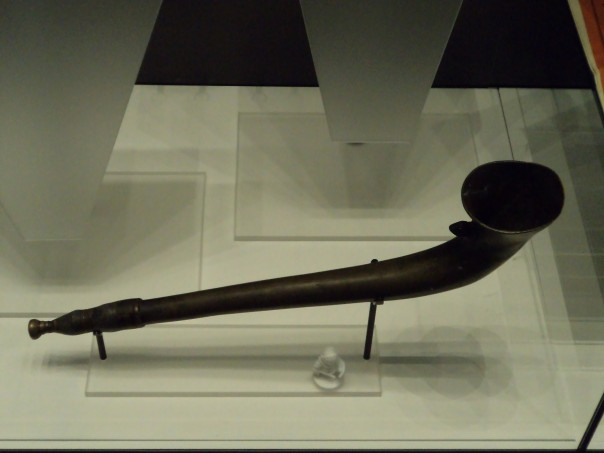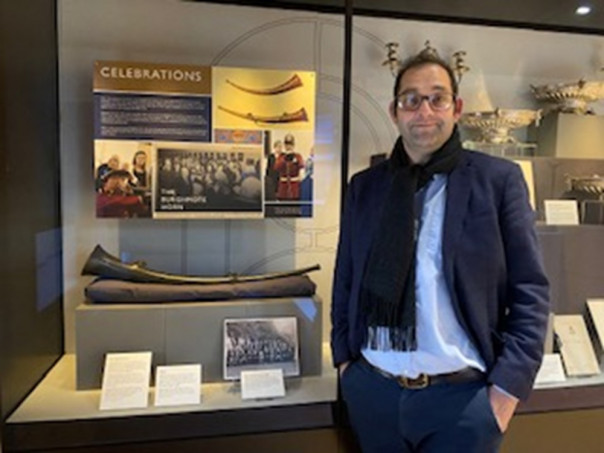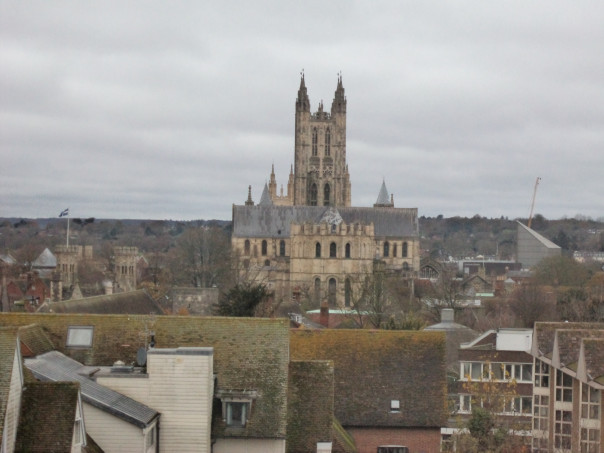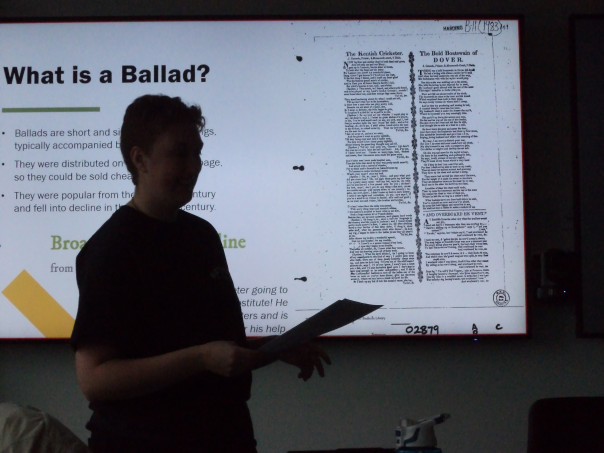Before I get to Abi’s presentation today, which will be the main focus this week, I just want to mention three other events since the end of last week that involve history and heritage.
Firstly, a group of us met Professor Louise Wilkinson at the British Library in London to visit the new ‘Medieval Women’ exhibition there. Louise had been involved in creating the exhibition as a member of the advisory group and they have done an excellent job. Interestingly, many of the manuscripts and documents on display have come from the British Library and The National Archives, with some from the Wellcome Collection and the V & A, as well as Oxford and Cambridge, and the Louvre in Paris, which is perhaps not surprising, but from a Kent perspective there was one very interesting panel showing the saints associated with Dartford Priory that came from Leeds Castle and is dated to the years before the dissolution of the Dominican nunnery. The exhibition is arranged thematically, such as topics relating to the body through medicine, anatomy and childbirth, and one of the exhibits is a birthing girdle. As you might expect, the majority of artefacts relate to the medieval Christian West, but there were some from much further afield, including gold coins from the first female Egyptian sultan from the mid-13th century. Consequently, we had a brilliant few hours exploring the exhibition and I shall be back there in January.

Due to being London, I sadly had to miss Dr Catriona Cooper’s 2-day conference entitled ‘CAA UK 2024: A Digital Archaeology and Heritage Conference’. This had a range of papers and posters on themes such as ‘Archaeogaming’, which Catriona has been working on with colleagues in the Creative Industries at CCCU, ‘GIS and geospatial analysis’, ‘simulations’, ‘3D modelling’ and many other exciting topics. I saw Dr Cooper on Monday, and she said it had been very successful and hopefully there will be more further developments in this field in the future.
Another colleague I saw this week is Professor Carolyn Oulton, from English Literature, and she said that she has very recently received an HLF grant in relation to working with four, I think, museums in east Kent’s coastal communities including Deal and Sandwich. This might be seen as a development of the Kent Maps Online project because again the idea is to showcase interesting places and people through online biographies, as well as apps to provide walking guides around these maritime settlements. The work to produce this material will be undertaken by voluntary groups linked to a specific museum. Again, another one to watch and I’ll let you know more once I receive more details from Professor Oulton.

Keeping with Sandwich, last week a group of students was exploring the Cinque Ports in the Middle Ages with specific reference to civic elections. Consequently, we used the materials in the custumals, specifically for Sandwich because it like Dover provides the greatest detail about the election process. As long-standing readers of the blog will know, this is a topic that I have discussed before, but here I just want to mention the importance placed on the moot horn – deployed to create an aural boundary around the town as it was used, in Sandwich, to summon the barons or freemen to St Clement’s church for the mayor-making. Nor were and are such moot horns only to be found at the Cinque Ports, and currently Canterbury’s horn is on display in Canterbury Cathedral’s Welcome Centre, as seen here. In addition to the horn, the students were interested in the punitive aspects of the election process in that anyone refusing to take public office once elected and not seen as having a viable excuse was in danger of losing his house. For the commonalty in such a scenario had the right to pull down the man’s house, which was presumably feasible because we are talking about timber-framed buildings.

It is now time to turn to Abi Kingsnorth’s presentation to the Kent History Postgraduates, and as well as a good number of her fellow postgraduates in the Verena Holmes Boardroom, we were joined by others of her peers online. This is the first presentation Abi has given to the group which meant most had very little idea about her doctoral research and they were excited to learn that she is working on broadside ballads. These street songs printed on single sheets of cheap paper were produced in vast numbers between the sixteenth and nineteenth centuries, peak production coming in the first decades after the Restoration in 1660. The song would be accompanied by a woodcut illustration and while many dealt with political issues relating to events of the day, Abi is exploring the corpus in terms of gender transgressions.
Her primary materials come from two main sources: English Broadside Ballads is a digitised collection of around 10,000 ballads of the blackletter type, these use heavy ‘gothic’ print and are the earlier form, while Broadside Ballads online comprises a digitised collection of some 30,000 ‘whiteletter’ ballads from the Bodleian at Oxford that were produced later, the printers using lighter Roman or italic typefaces. So far Abi has identified 400 ballads that she sees as fitting within her chosen theme of those that draw on ideas of gender nonconformity, that is they highlight any behaviour of what early modern culture saw as the gender norms linked to men and to women.

To work thematically within this field, Abi has decided to investigate five areas, including cross dressing, crime and relationships. To illustrate how she is seeking to analyse such ballads, she offered one about two creatures called Fill Gut and Pinch Belly which as well as the song has a very graphic image. As she said they were intended to be memorable, the words fitted to a well-known tune, but the material culture can be seen as ephemeral due to their very cheapness, the sheer number produced and their widespread dissemination.
As a means to try to study them in use, at least to a degree, Abi is not only analysing them as texts but is seeking to explore matters of performance through the employment of soundscapes – how were they used by singers to draw a crowd, what other sounds in the early modern town would they have been competing against and how might different spaces have impacted differently. Her three scenarios are an alley, a courtyard and a tavern and to do this creative engagement she is working with the university’s Creative Innovation Hub, the idea being to produce a video of each scenario using these 3-D environments and the singers she has recruited, for as she said, she has a special interest in public history and heritage, seeking to take her work to audiences beyond the world of universities.
Her excellent presentation provoked a raft of questions, comments and suggestions from her audience, and she has probably recruited another singer too! And in terms of the group, we won’t be having a meeting in December and instead come January Maureen will give one on her research into the history of the Tonbridge deer parks and chases, from their formation through to their dismantling and the creation of multiple farms.
 Centre for Kent History and Heritage
Centre for Kent History and Heritage Sheila Sweetinburgh
Sheila Sweetinburgh 1573
1573

